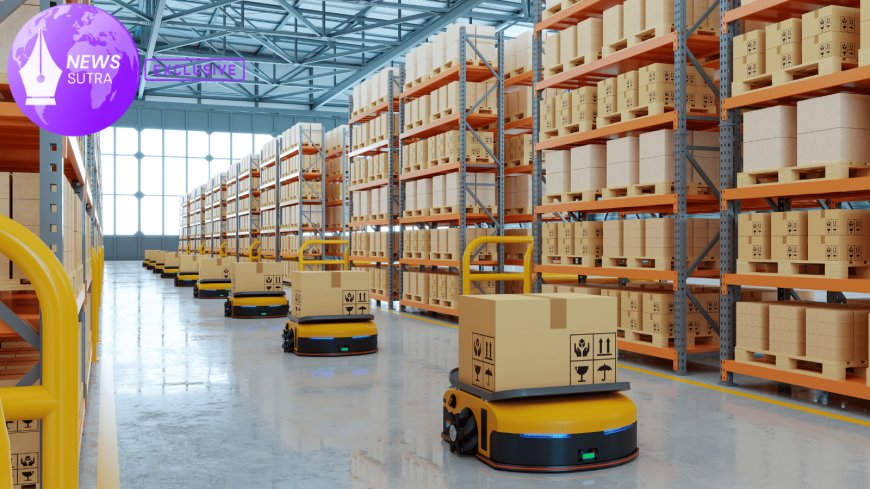Tariff Economy Boosts Big Retailers: Walmart and Amazon’s Secret Supply Chain Tweaks
Walmart and Amazon quietly adjust their supply chains to thrive under tariffs, stabilizing prices while small retailers struggle. Exclusive insights reveal how big retail wins in a tariff economy.

The ongoing tariff-driven economy, once seen as a looming threat to consumer prices and business margins, is proving to be a surprising advantage for America’s biggest retailers. Walmart and Amazon, armed with unmatched supply chain flexibility, have quietly restructured their operations to absorb tariff shocks—offering consumers competitive prices while smaller businesses struggle to keep up.
This shift underscores a growing divide in retail: giants with global infrastructure have learned to turn trade disruptions into strategic leverage, while independent retailers remain exposed.
A Tariff Landscape Reshaping Retail
Tariffs, once thought of as blunt instruments of trade wars, are now a fixture of U.S. economic policy. Industries ranging from consumer electronics to household essentials have faced additional import duties, prompting widespread predictions of higher costs at checkout.
Yet, Walmart and Amazon have managed to defy those forecasts. Industry insiders point to years of supply chain investment, particularly in advanced logistics and data-driven procurement, as the foundation of their resilience.
A senior logistics analyst in Bentonville noted, “Walmart began diversifying sourcing channels long before tariffs escalated. They built relationships in Southeast Asia, Mexico, and even domestic manufacturers to hedge against Chinese dependencies.”
Meanwhile, Amazon has tapped its sophisticated forecasting algorithms to anticipate demand spikes, locking in freight and supplier contracts ahead of tariff deadlines.
Secret Supply Chain Adjustments
Documents reviewed by industry analysts reveal that both retailers are adopting quiet but significant shifts:
-
Geographic Diversification – Walmart expanded procurement in Vietnam, India, and Central America, reducing reliance on Chinese imports.
-
Supplier Consolidation – Amazon pushed smaller vendors to merge shipments through preferred logistics partners, cutting costs and tariffs per unit.
-
Dynamic Pricing Models – Both companies use real-time AI pricing tools, softening tariff-related price hikes by redistributing costs across categories.
-
Tariff Absorption Strategy – Select high-demand items, such as groceries and personal care, are shielded from tariff pass-throughs to preserve customer loyalty.
These adjustments, though not widely publicized, are quietly reshaping retail economics.
Consumer Impact: Prices Stabilized, Choices Expanded
Contrary to earlier fears, average consumer prices at Walmart and Amazon have remained relatively stable compared to independent retailers. A comparison of tariff-sensitive categories—electronics, furniture, and apparel—shows a narrower price increase at big-box retailers than local competitors.
For example, a mid-range washing machine that rose by 8% at regional retailers increased only 3% on Amazon during the same period.
This price discipline has not gone unnoticed. A recent Reuters report highlights that Walmart’s quarterly earnings exceeded expectations largely due to tariff-era cost savings. Similarly, CNBC’s business coverage has emphasized Amazon’s resilience in weathering global supply chain volatility.
Small Business Owners Left Vulnerable
While Walmart and Amazon thrive, small business owners across the U.S. are voicing concern. Without the scale or capital to rework supply chains, many are forced to pass tariffs directly to consumers or cut into already thin margins.
A furniture store owner in Ohio shared, “We can’t renegotiate supplier contracts or ship through five countries like Walmart can. Every tariff dollar shows up in our prices, and customers notice.”
The widening disparity raises fresh questions about retail competition in an era when policy choices disproportionately reward scale.
The Future of Retail in a Tariff Economy
As trade disputes persist, experts suggest tariffs may become a semi-permanent feature of U.S. commerce. If so, Walmart and Amazon’s playbook—agility, diversification, and data—could serve as a blueprint for survival.
But the consolidation of advantage in the hands of two behemoths carries long-term risks. Smaller retailers may be forced out, and consumer choice could shrink, even if prices remain stable in the short term.
An economist at Georgetown University summed it up: “Tariffs don’t hurt everyone equally. They widen gaps—between countries, between consumers, and most visibly, between big and small businesses.”
Key Takeaway
Walmart and Amazon are proving that tariffs, once feared as a retail apocalypse, can be re-engineered into a competitive edge. Their secret supply chain adjustments show that adaptability is now the most valuable currency in retail. For smaller players, survival may depend less on tariff policy and more on finding innovative ways to compete against giants that no longer just weather storms—but harness them.
What's Your Reaction?
 Like
0
Like
0
 Dislike
0
Dislike
0
 Love
0
Love
0
 Funny
0
Funny
0
 Angry
0
Angry
0
 Sad
0
Sad
0
 Wow
0
Wow
0







































































